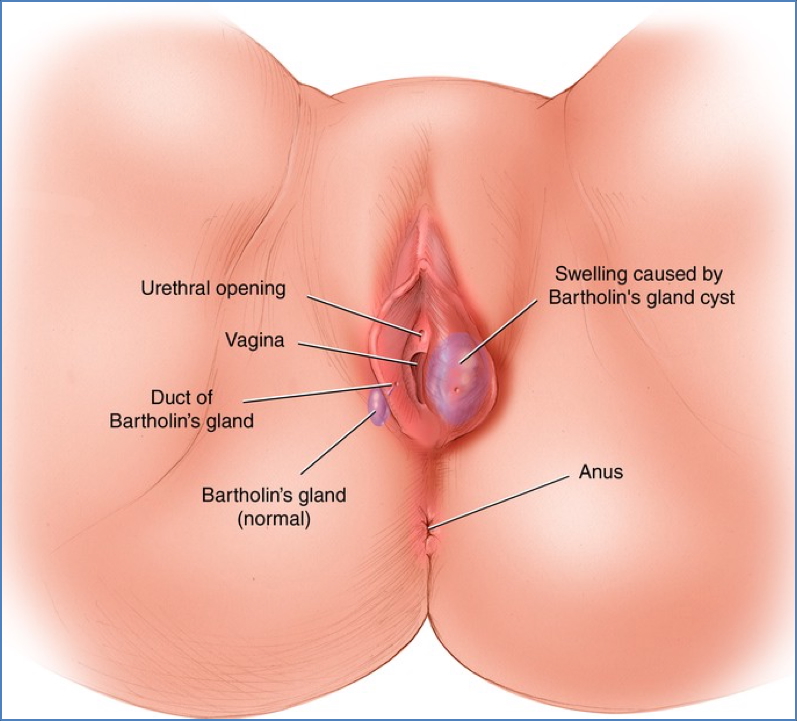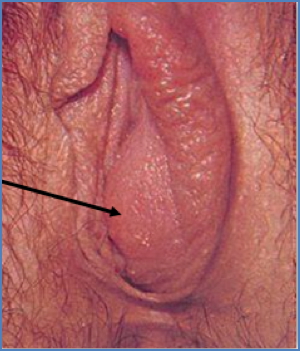Table of Contents
Overview
A Bartholin gland cyst, also known as a greater vestibular gland cyst, is a fluid-filled swelling that arises due to blockage of the Bartholin gland duct. These cysts most commonly occur in women of reproductive age and can be painful and recurrent. While many are benign, complications such as infection and abscess formation may require surgical intervention.
Definition
A Bartholin gland cyst is a fluid-filled enlargement of the Bartholin (greater vestibular) gland due to obstruction of its duct.
Aetiology
- Physical obstruction of the Bartholin gland duct
- Causes include:
- Mucous plug
- Local infection or inflammation
- Trauma or scarring
Pathogenesis
- Obstruction leads to fluid build-up within the gland
- Secretions accumulate behind the blockage → cyst formation
- Secondary infection may result in a Bartholin abscess

Morphology
Macroscopic
- Size varies: from pea-sized to egg-sized masses located at the posterolateral aspect of the vaginal introitus
Microscopic
- Dilated glandular duct lined with squamous or transitional epithelium
- Cyst wall may show signs of chronic inflammation if recurrent

Clinical Features
- Typically affects women of child-bearing age
- Symptoms:
- Localised swelling near the vaginal opening
- Pain, especially when walking or during intercourse
- Cysts may be asymptomatic if small
- Recurrent in some women
- Complications:
- Bartholin’s abscess – intense pain, redness, and fluctuant swelling due to secondary infection
Management
- Asymptomatic cysts may not require treatment
- Symptomatic or infected cysts:
- Incision and drainage
- Marsupialisation – surgical creation of a new duct opening to prevent recurrence
- Antibiotics if secondary infection present
- Recurrent or complex cysts may require Bartholin gland excision
Summary
A Bartholin gland cyst is a common and painful condition affecting the vulvovaginal area, often caused by blockage of the gland’s duct. Management depends on the presence of symptoms or infection and may include surgical drainage or marsupialisation. For more related content, visit our Reproductive Health Overview page.